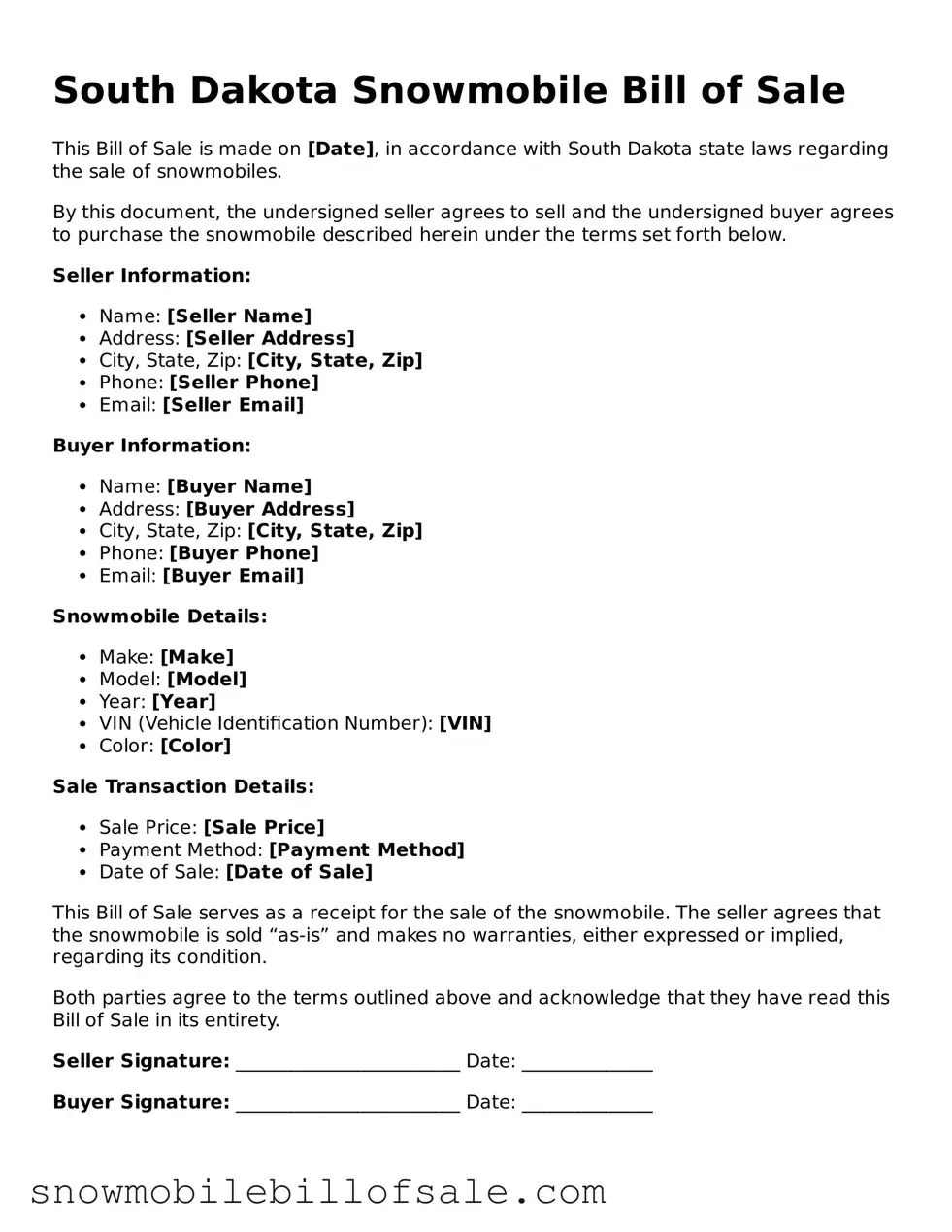The South Dakota Snowmobile Bill of Sale form shares similarities with a standard vehicle bill of sale. Both documents serve as a legal record of the transfer of ownership from one party to another. They typically include essential details such as the names and addresses of the buyer and seller, a description of the item being sold, and the sale price. This ensures that both parties have a clear understanding of the transaction and provides a basis for any future disputes regarding ownership or condition of the item.
Another document that resembles the Snowmobile Bill of Sale is the boat bill of sale. Like the snowmobile form, the boat bill of sale outlines the transfer of ownership for watercraft. It includes similar information, such as the vessel's identification number, make, model, and year. Additionally, both documents may require the seller to disclose any liens or encumbrances on the item, protecting the buyer from potential legal issues related to ownership.
The motorcycle bill of sale is yet another document with comparable features. This form facilitates the transfer of ownership for motorcycles and includes pertinent details like the Vehicle Identification Number (VIN), odometer reading, and any warranties or guarantees associated with the motorcycle. Both documents aim to protect the interests of both the buyer and seller, ensuring that the transaction is conducted fairly and transparently.
In a similar vein, the all-terrain vehicle (ATV) bill of sale serves a related purpose. This document formalizes the sale of ATVs, capturing crucial details such as the make, model, year, and VIN. As with the snowmobile bill of sale, this form provides legal protection for both parties and serves as proof of ownership. It can also be useful for registration purposes and for potential future sales.
The personal property bill of sale is another document that mirrors the Snowmobile Bill of Sale in its function. This form is used for the sale of various types of personal property, which may include items like furniture, electronics, or collectibles. It typically includes information about the item being sold, the sale price, and the parties involved. Like the snowmobile form, it helps establish a clear record of the transaction and protects both parties’ interests.
Additionally, the trailer bill of sale shares similarities with the snowmobile form, as it facilitates the transfer of ownership for trailers. This document includes essential information such as the trailer's VIN, make, model, and year of manufacture. Both forms serve to document the sale and ensure that the buyer receives a legitimate transfer of ownership, protecting against future claims or disputes.
The livestock bill of sale is another comparable document, specifically designed for the sale of livestock. This form captures details such as the type and number of animals being sold, as well as the sale price. While it pertains to a different category of goods, its function as a record of ownership transfer parallels that of the snowmobile bill of sale, providing legal protection for both buyer and seller.
The firearm bill of sale also bears resemblance to the Snowmobile Bill of Sale. This document is used to record the sale of firearms and includes critical information such as the make, model, and serial number of the weapon, as well as the identities of the buyer and seller. Both forms serve to document the transaction, ensuring that it complies with relevant laws and regulations regarding ownership transfer.
Lastly, the antique vehicle bill of sale is similar in purpose to the snowmobile form, as it is used for the sale of vehicles classified as antiques. This document includes details about the vehicle's age, condition, and any special features that may affect its value. Both forms provide a legal framework for the transfer of ownership and help to protect the rights of both parties involved in the transaction.
